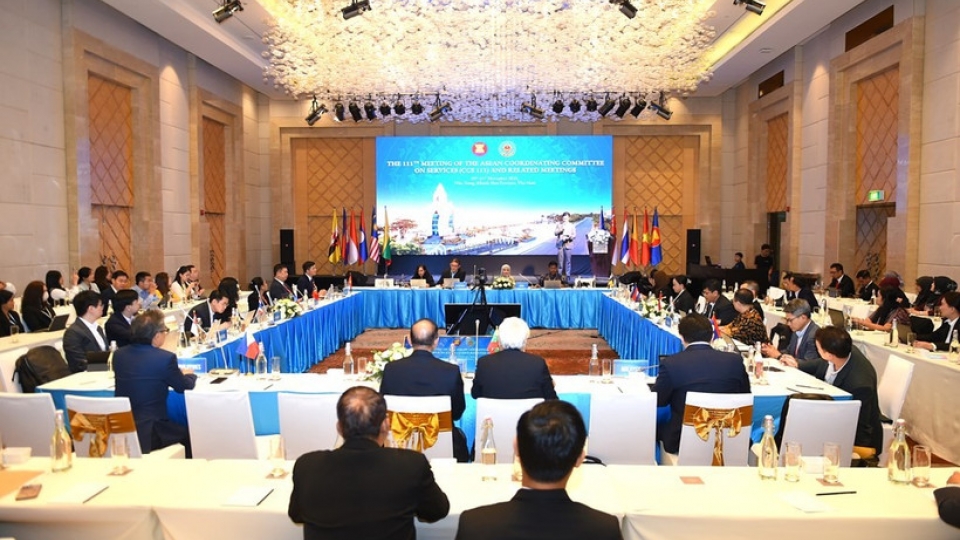Vietnam sees ample room to expand trade, investment in ASEAN
ASEAN’s rapidly growing consumer market continues to present major opportunities for Vietnamese enterprises, though firms are increasingly required to meet higher technical and origin standards.

At a workshop in Ho Chi Minh City on November 14 on the ASEAN Economic Community (AEC) and the utilisation of free trade agreement (FTA) commitments for key export sectors, Nguyen Viet Chi, Deputy Director of the Department of Multilateral Trade Policy under the Ministry of Industry and Trade (MoIT), stressed that after three decades in ASEAN, the bloc remains one of Vietnam’s top economic partners. ASEAN is currently Vietnam’s fourth-largest export market, following the US, China, and the EU.
Customs data indicates that Vietnam’s exports to ASEAN reached nearly US$36.9 billion in 2024, representing a 13.3% increase from 2023 and accounting for over 9% of the country's total export turnover. In the first nine months of 2025, exports amounted to US$28.5 billion, marking a year-on-year rise of 2.8%. With a population of 700 million, geographical proximity, low logistics costs, and similar consumption habits, ASEAN remains a promising destination for Vietnamese exporters. Conquering this market allows them to meet stringent requirements and expand into more demanding countries with higher standards.
Chi said the AEC seeks to create a unified market and production base, promote the free movement of goods, services, investment, and skilled labour, and enhance regional competitiveness. ASEAN has negotiated and implemented multiple FTAs that allow enterprises to diversify markets and join regional value chains. Vietnam currently participates in eight ASEAN-related FTAs and is negotiating another with the bloc.
Amid global trade fluctuations, Nguyen Truong Thi, Deputy Director of the Ho Chi Minh City Department of Industry and Trade, said the city continues to coordinate closely with ministries and associations to support enterprises in strengthening trade-remedy capacity and complying with origin rules to avoid risks of anti-dumping, countervailing duties, and illegal transshipment. With more than 400,000 businesses, the city requires timely updates on new policies, regulations, and ongoing FTA negotiations to capitalise on incentives.
Reviewing ASEAN’s economic cooperation outcomes, Quyen Anh Ngoc, head of the ASEAN Division under the MoIT's Department of Multilateral Trade Policy, noted that ASEAN’s GDP rose from US$2.5 trillion to US$3.8 trillion over 10 years of implementing the AEC Blueprint. Total trade increased from US$2.3 trillion to US$3.5 trillion, with intra-ASEAN trade maintaining the largest share.
ASEAN remains one of Vietnam’s leading trade partners, with export quality and value improving, and Vietnam continuing to attract investment from within and outside the region. However, the utilisation of tariff preferences under FTAs remains inconsistent, with traditional FTAs showing signs of declining use.
According to Vu Xuan Hung of the Vietnam Chamber of Commerce and Industry’s HCM City branch, Vietnam still prioritises the US, the EU and China, while opportunities in ASEAN, supported by proximity, low logistics costs and preferential tariffs, remain underused. Non-tariff measures across ASEAN continue to tighten, especially in areas such as traceability, technical standards, labelling and trade-remedy actions, placing pressure on exporters.
Vietnam's electronics industry must transition from assembly to component design and manufacturing to increase value addition. In the wood sector, it is essential to ensure that timber sources are legal and to meet various market preferences while addressing the risks of origin fraud. Although agricultural products have improved market access, they face intense competition. This necessitates deeper processing, standardised packaging, Halal certification, brand development, enhanced traceability, and stronger distribution systems.
Experts affirmed that ASEAN remains a strategic market with substantial potential for Vietnamese businesses, which must strengthen integration capacity, optimise FTA benefits and prepare for new agreements. They also highlighted the need for greater support from industry authorities and associations to help firms comply with origin rules, address trade-remedy issues, and fully seize opportunities in the ASEAN market.




